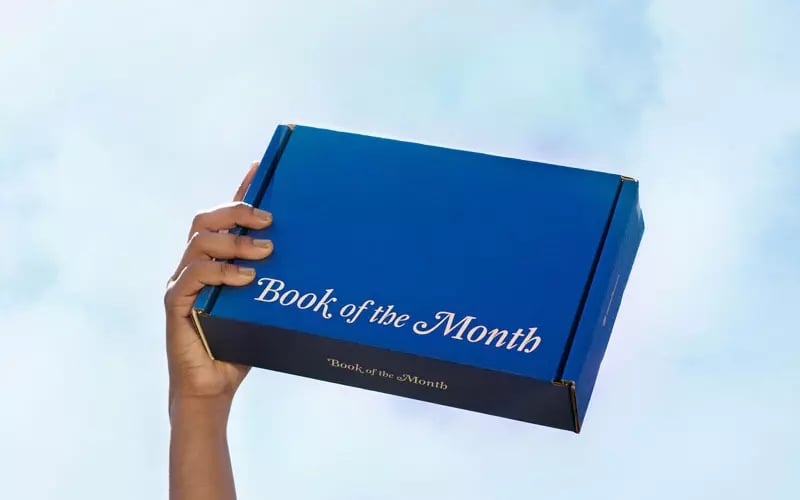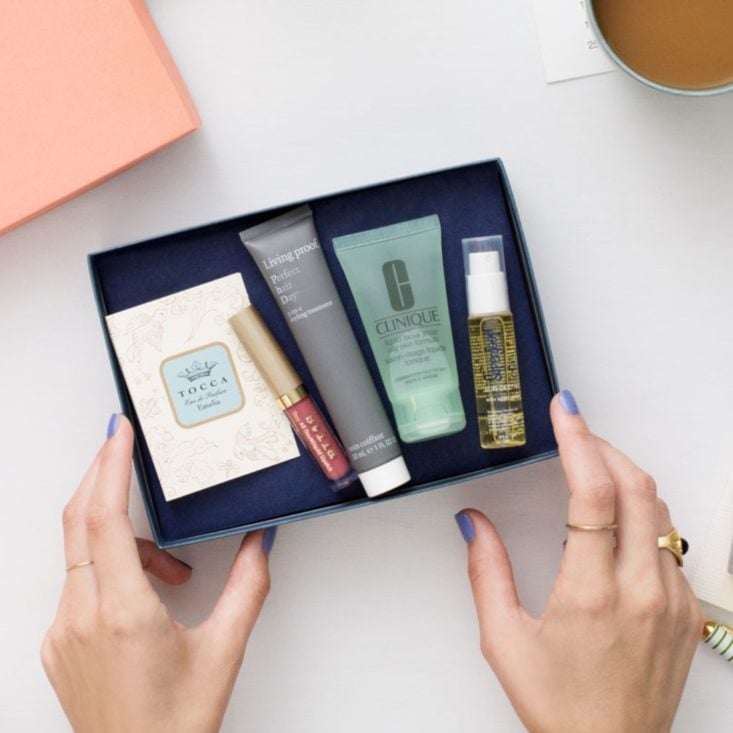
What do Welsh flannels, Book of the Month Club, and lunch in Mumbai all have in common? Interestingly enough, more than you may think!
At first glance, these 3 may seem completely unrelated (unless of course you happen to be wearing flannel, while reading Anthony Bourdain's memoir, and eating lunch at a restaurant in downtown Mumbai, and then well...touché).
All three of these however, are small but mighty pieces of a large and complicated puzzle that have helped shaped the modern day subscription. Not only pioneers of their industries, they were also incredibly successful. With roots that date back over 100 years, two of them are actually still in business today, and one of those is so envied, that their system is studied by prestigious organizations like Harvard Business School and powerhouse businessman Richard Branson.
Many of us believe that subscriptions and subscription boxes are a new and novel idea to consumerism, and while modern day boxes may be, subscriptions have roots that date back hundreds of years. In fact, the more I dug and looked into subscription boxes, the more I realized that there were many defining moments in our history that have helped to shape our subscription obsession as we know it.
Fun fact: Did you know we were streaming music to subscribers 100 years before the internet was even born? Don't believe me? Read on!
Ok, so what's with the Welsh flannels?

Image via Newton town council.
In order to understand how our modern day subscription box came to be, we need to go back to the 19th century.
I had actually wanted to start in the Roman times when the mail system was created, but I figured that might be a bit extreme.
Back in 1861, a man by the name of Pryce Pryce-Jones started what is considered the first mail-order business in Newton, Wales. Working as a boy in a draper shop, he quickly learned the ins and outs of the retail business and eventually opened his own. He soon realized that selling flannels through mail-order brochures and shipping them outside of Newton could mean big business. He became a renowned Welsh flannel retailer around the UK and even began selling flannels to royalty such as Queen Victoria.
He quickly decided he wanted to take his business to the next level. He built a large warehouse he called the Royal Welsh Warehouse next to the Newton train station. This enabled him to easily sell and distribute his flannels to customers from all over. To say his business exploded would be a huge understatement. He was now selling his flannels to not just customers in the UK, but all over Europe through a fast and efficient business plan. To put this in modern terms, Pryce Jones basically "invented the first Amazon warehouse". He became so famous that he was even knighted before his death.
There is some debate as to whether Pryce Jones or Montgomery Ward of Chicago and his mail-order business was actually the first. Both businesses were started almost simultaneously, however Pryce Jones was the first on record to make a business out of mailing his products.
So, what does all this have to do with your monthly subscription boxes?
Well, along with the mail-order business also came the mail-order catalog. For the first time ever, customers could sit comfortably in their homes, sipping a coffee, and decide what they wanted to purchase without ever stepping foot out of their house. This was huge. It coincided closely with the start of the rail network and the modern day mail system in both the US and UK. This enabled customers who lived in more rural areas to receive products that were usually only available for city-dwellers or the very rich. This new business model would quickly catch-on (remember hearing about the Sears catalog!?) and packages were now being shipped back and forth at an incredible rate of growth.
Time for Lunch in Mumbai

Image via Mumbai Dabawalla.
Over in Mumbai, India lives one of the most intricate and flawless delivery services in the world. Started in 1890, the Dabawallas are envied by business schools and big-name corporations around the world. At its simplest form, it is lunch delivery to monthly members. At its most complex, it is a massive network of 5,000 Dabawallas racing across Mumbai to serve over 200,000 people with almost a 100% on time record and rarely any delivery issues.
Everyone wants to know the Dabawalla secret. How on earth do they manage to deliver food every single day, on time, and without fail? They have even been asked to speak at TED talks to budding entrepreneurs and students.
So how does the Dabawalla system work?
For a monthly fee of approximately $6-$15, a Dabawalla will pick up your lunch from one location and drop it to you during your specified time at another location across the city. They will then carry your lunch box back to your original location later that day. Traditionally, many workers in India started work very early. Way before the lunch for the day had even been prepared. So, they would have the Dabawallas pick up their lunch from their home after it was made and deliver it to them during their lunch. Using a numbered and color-coded system (85% of Dabawallas are illiterate, which honestly make this whole system that much more impressive), they quickly and accurately would deliver your lunch across the city.
Originally, the Dabawallas did all of this using zero technology and only worked off word of mouth. But now the Dabawallas have experienced phenomenal growth and to keep up with both modern times and the impacts from Covid, they have also began a website and opened up their own kitchen from which you can order your lunch as well. Now that is a pretty amazing meal subscription box.
As more and more businesses study systems such as the Dabawalla's (Postmates, anyone?), the better services and subscriptions will become. Meal subscription services are fantastic, but the original one of them all, the Dabawallas, prove that there is only room for improvement.
The True OG

Image via Book of the Month Club.
Ok, so I talked about how products and packages first started getting shipped and the first monthly meal service, but what was the first actual subscription box?
Well that prestigious accolade goes to: Book of the Month Club.
In April of 1926, Harry Scherman took the mail order business up a notch and paved the way for thousands of other subscription clubs. Combining his marketing and publishing experience, Scherman figured that if they could have a steady stream of income every single month, that this would be more profitable and sustainable than trying to attract customers back each and every time.
Scherman along with his two partners mailed out just over 4500 books to subscribers hungry for books they couldn't easily get. These subscribers had come from a previous failed attempt at a book club called the Little Leather Library. This time around however, Scherman and his partners hit the jackpot. They branded their company as a prestigious literary club, promising that all of the books would be hand picked by their literary staff.
Fun fact: The Book of the Month Club is actually credited with helping to launch both Ernest Hemingway's and J.D. Salinger's careers after choosing their books to be featured. Looking back on history, we know these two authors to be literary geniuses, but would they be household names if the Book of the Month Club had not chosen them? It poses an interesting question and one that makes us realize just how intertwined our history really is!
The Book of the Month Club quickly became a booming success. Within 8 months, they had already garnered over 46,000 subscribers, and had net sales over half a million dollars (thats approximately $8 Million in today's money). They thrived during the Great Depression and WWII and just a little over 20 years later, the Book of the Month Club would see themselves ship out their 100 millionth book.
This new and novel approach to the mail order business was the first of its kind and would see many other successes over the coming years. The BOTMC would eventually restructure and be sold multiple times throughout the decades, but through it all they were able to be flexible enough to survive to this very day.
The First of Different Categories
Surprisingly, as successful at the Book of the Month Club was, it would take many more decades for other industries to jump on the bandwagon with subscription boxes of their own. Thankfully, there are now literally thousands of subscription box companies around the world, each one making our daily lives either a little bit easier or just a bit more fun. (I'll take both, please!)
The categories are endless and nearly everything can be found by subscription. From normal, daily necessities such as food and clothing to the offbeat, like skull of the month and cat lady boxes, there is literally a subscription box out there for everyone.
But what were the other boxes that blazed the paths to make the subscription box world what it is today?
Let's take a quick look at a few other subscription boxes that were the first of their kind in their respective categories.

Beauty: Harvard business graduates Katia Beauchamp and Hayley Barna founded Birchbox from an idea in 2010. In our interview with Katia, she said Birchbox was designed to be the "best friend/secret shopping weapon". Well, they definitely succeeded because their success grabbed the attention of others and within a year, beauty subscription boxes started popping up everywhere.

Image via Wine of the Month Club.
Alcohol: The Wine of the Month Club was founded in 1972 by Paul Kalemkiarian Sr. Originally from Egypt, he moved to California to pursue a master's degree in pharmacology and would eventually open up multiple pharmacies. One of those pharmacies happened to have an adjoining liquor store where he would recommend wine to his customers each month. And well... the rest is history!

Image via Middagsfrid.
Meal Kits: While the Dabawalla's can be considered the first monthly meal service, it's technically not a curated box. That award goes to Middagsfrid who started a meal kit subscription box back in 2007 in Sweden. (Technically they deliver their meal ingredients in a bag, but aren't paper bags just floppy boxes?) In the US, the first meal delivery did not start until Blue Apron splashed onto the scene in 2012.
Music: In 1955, Columbia Record Club started through the famous recording company, Columbia House. They wanted to try the subscription club business model and decided to ship out albums each month to music lovers around the country. For anyone that did not live in a large city, this was a fantastic option for purchasing all of the hit music of the day. Just as the Book of the Month club expanded rapidly, so did Columbia Records Club. They had sold 7 million records by the end of their first year. Unfortunately, the times also changed quickly and they would see their profits dwindle by the 90s, eventually ceasing operations upon the rise of streaming services.

Image via Netflix.
Streaming Services: Not a box... I know. But is there really that big of a difference between a monthly subscription service and a tangible item? Both are products that you want and you pay monthly for the privilege to have. I mean, even money has become virtual! So, needless to say, streaming services made my list.
Netflix was actually both the first monthly movie subscription service and monthly streaming service. Talk about some serious foresight! Netflix was born in 1997 (yes born, this thing is a living creature!) They tried multiple membership modes and offered both single movie rentals as well as a monthly subscription where subscribers could pay a flat monthly rate for unlimited movie rentals and no late fees. Money troubles for the new company caught up to them, so they tried approaching Blockbuster in order to merge and be their online department. In what might be the biggest business mistake in recent history... Blockbuster declined. So Netflix pushed forward and somehow managed to stay afloat before introducing streaming services in 2007. Netflix is now one of the top media companies in the entire world.
Taking just a quick step back, you may remember my fun factoid comment from above about streaming back in the 1800s? No, I'm not crazy, it was actually a thing and way beyond it's time. It was called the Theatrophone and was actually invented in 1881. Theatre fans were actually able to sit in their hotel or favorite restaurant and listen to music from the Paris Opera a few miles away through headphones (for a fee of course). This was enabled due to the inventor putting microphones and wires through sewers in order to transmit the sound. Not quite as easy as us throwing on our headphones today and having access to millions of songs, but this was definitely the forerunner to our streaming services of today.

Image via Trunk Club.
Clothing: Trunk Club was founded in 2009 and believe it or not it actually was started as a men's styling service. Accurately, believing that men would prefer to have someone else do the "shopping" and styling for them, Trunk Club took off and was then acquired by Nordstrom in 2014 for a whopping $350 million. The very next year they offered a styling service to women as well. Despite a few bumps in the road, Trunk Club is still one of the most popular styling and subscription clothing boxes.
Future of Subscriptions and Sub Boxes
The subscription world has evolved into an amazing new business model for thousands of companies. Surprisingly though, the core model has barely changed at all. From the first mail order business to the first streaming service, subscriptions themselves have seem to come full circle in today's world.
As we look to the future of subscription boxes, we wonder what changes might come about. Can subscription boxes take on the Dabbawalla method and deliver products daily? Will more companies and brands start their own subscription boxes? Or will shipping companies such as Fedex and Amazon invent the next better and faster delivery method?
All of this remains to be seen! But what we know for sure now, is that subscriptions are here to stay, and that makes us pretty darn happy.





Please do not enter your email address in the Name field or in the comment content. Your email address will not be published. Required fields are marked *. Remember to post with kindness and respect. Comments with offensive language, cruelness to others, etc will not be approved. See our full comment policy here.